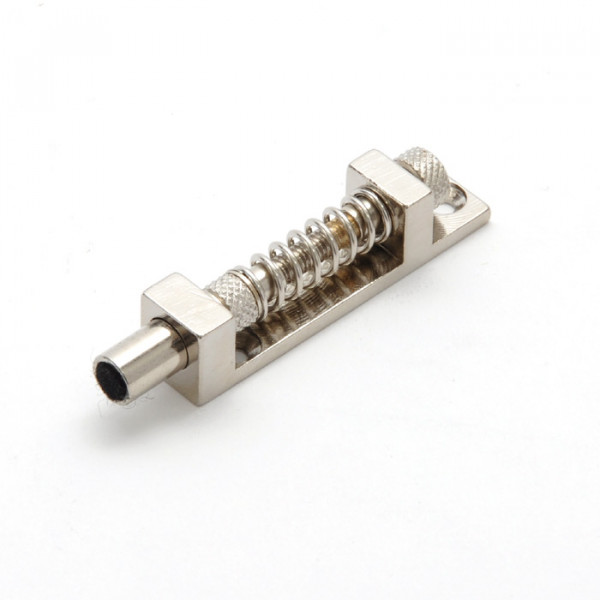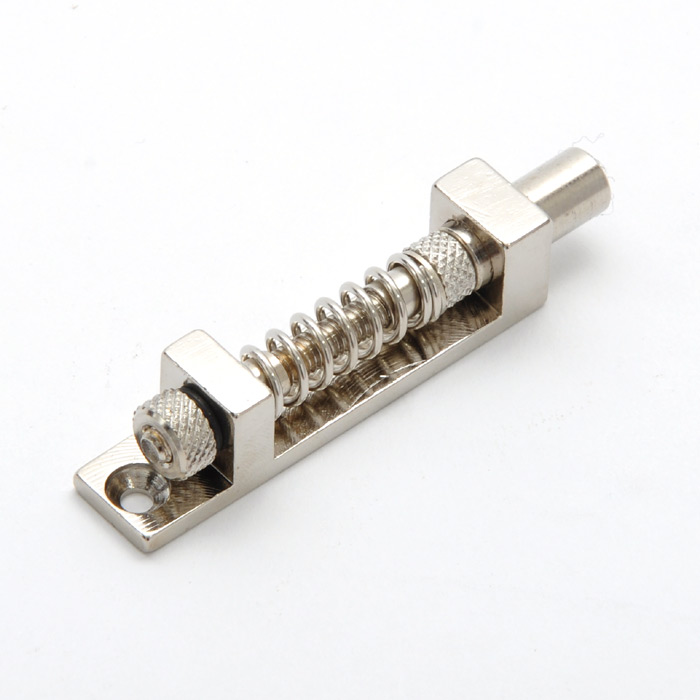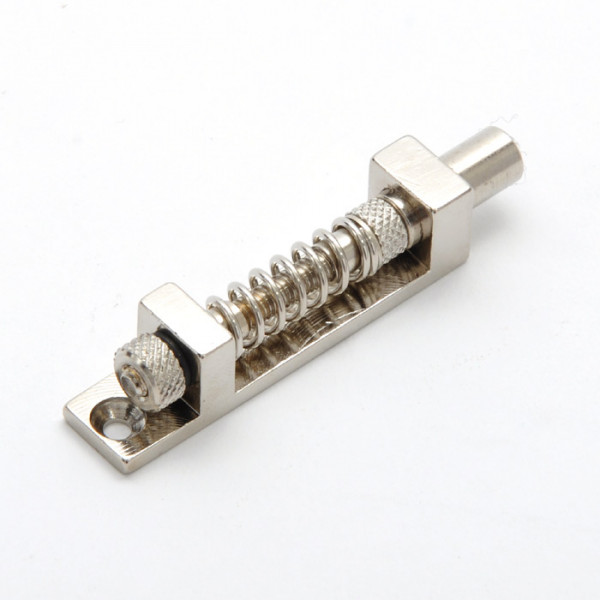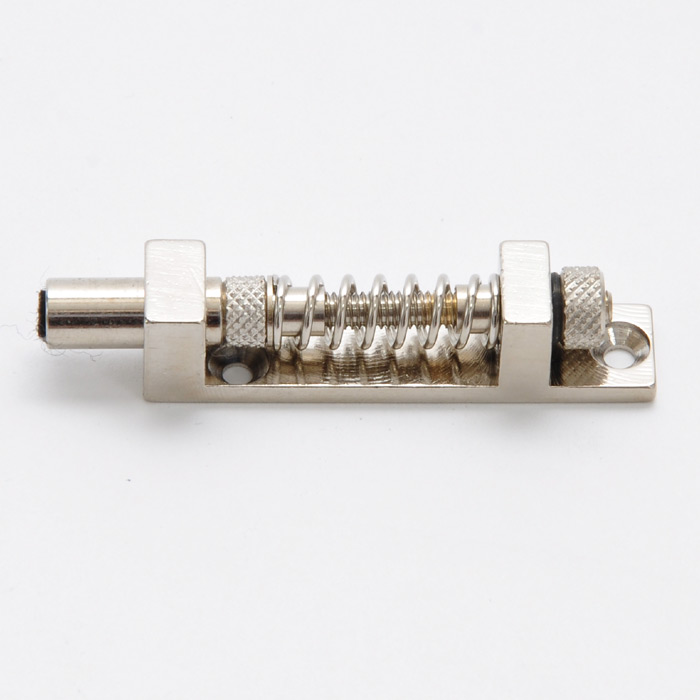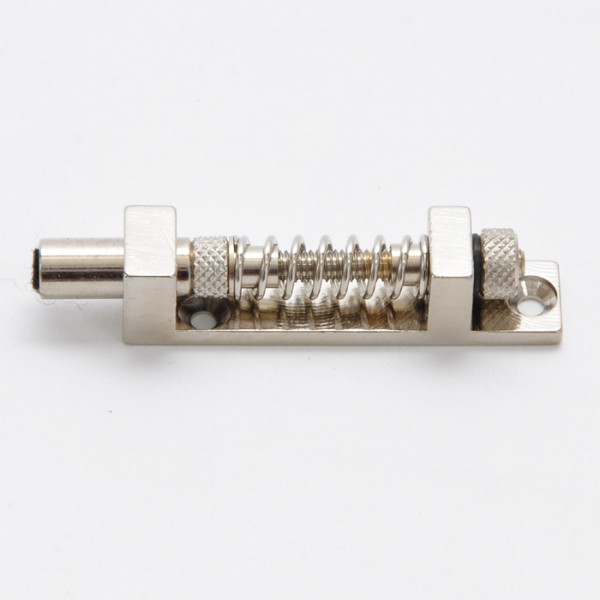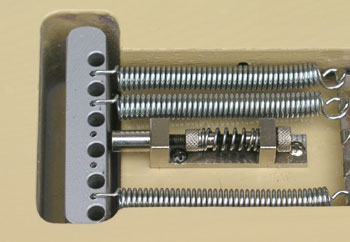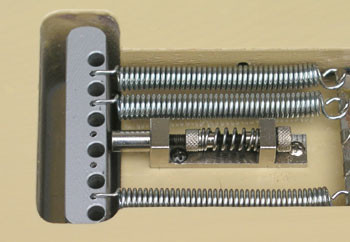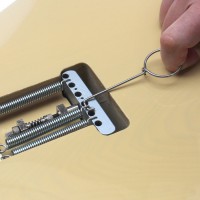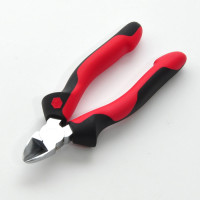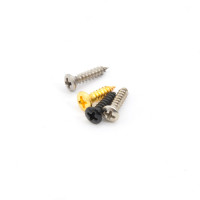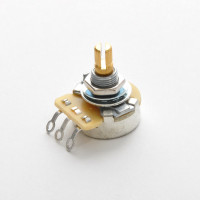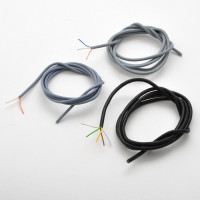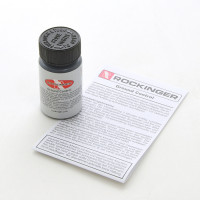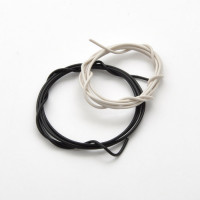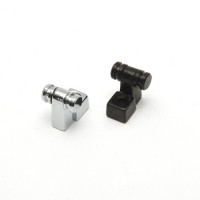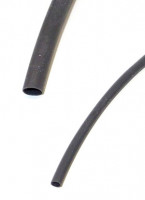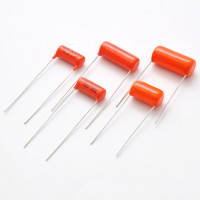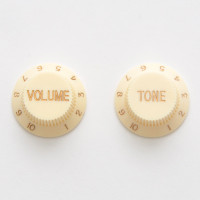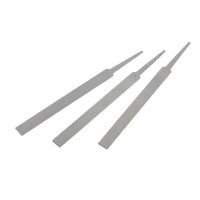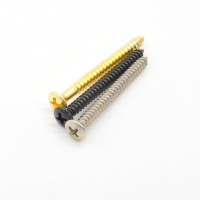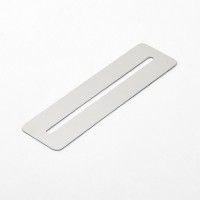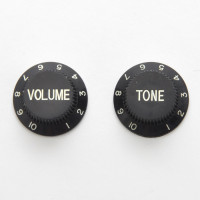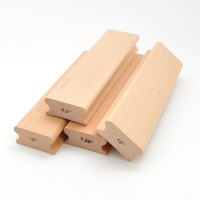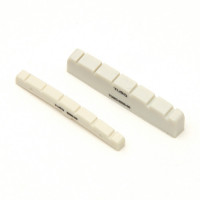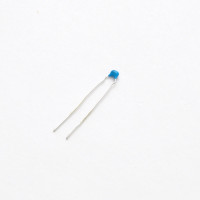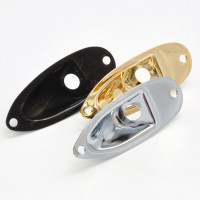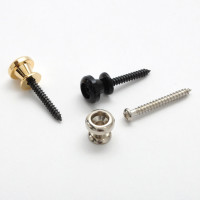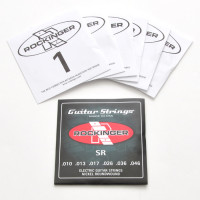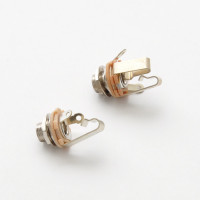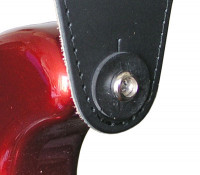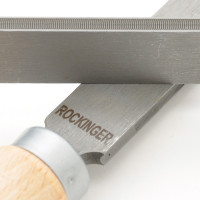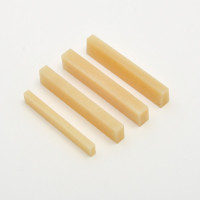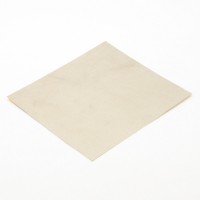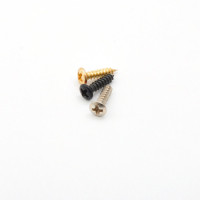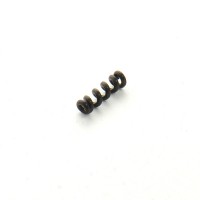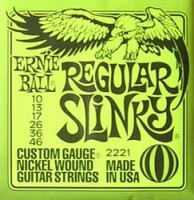Rockinger Black Box Tremolo Stabilizer
-
Description
Tremolo Stabilizer. The classic add-on unit which puts every Floyd Rose- or Fender-style tremolo into a fixed rest position.A small spring loaded mechanism allows a free floating tremolo to return into a pre-definided position after usage. This also prevents the tremolo from buzzing after hitting the strings too hard. The ROCKINGER Black Box is being installed in the tremolo routing between two tremolo springs.
One of our international customers wrote this wonderful description (thank you, Keith):
1. The spring of the Black Box is pre-loaded (compressed), so that it extends the plunger from the housing, as far as the position of its adjustable stop allows. A force exceeding this pre-load will be required, to press the plunger into the housing.
2. The Black box is mounted, and the plunger stop is adjusted, so that the tip of the plunger contacts the trem block, when the trem block is in the "zero" position.
3. The guitar tremolo springs should be adjusted so that when the trem block is at its zero position, the moment which the springs exert on the tremolo bridge slightly exceeds the opposing moment, exerted by the string tension (including additional forces during any pitch-bending).
This will ensure that the tremolo block is always returned to, and held held firmly against, the Black box plunger, after any diving, and during pitch bending. During these conditions, the plunger is not moved from its zero position, because the pre-loading on its spring is greater than the resultant force being exerted on the plunger by the trem block.
4. If a string is de-tuned, or broken, then the resultant force exerted by the trem block on the plunger will increase. The plunger spring pre-load must exceed this force, in order to retain the zero position, and thus maintain pitch.
5. Raising pitch by lifting the tremolo arm will depress the plunger. The pre-load, plus the increasing resistance of the plunger spring will make the tremolo arm feel stiffer that normal. When the arm is released, the same spring energy will ensure that the system is returned to zero.
6. Depressing the tremolo arm will reduce string pitch as normal, perhaps with a slight increase in stiffness, due to the increased tension in the trem springs. On release of the tremolo arm, (as mentioned above) the increased trem spring tension ensures that the trem block is firmly brought back to the zero position against the Black Box piston.
Installing the ROCKINGER BLACK BOX
- All strings are kept in stable tune, even if you rest your hand on the bridge or you bend a string or a string breaks.
- Strings have better vibration behavior (just like non-tremolo guitars).
Let`s consider what happens if the string tension changes; the string tension changes when for example the guitar is retuned but also happens if only one string is pulled during playing, if the ball of the hand rests on the bridge – and even if just one string is hit. Because: All these above actions are the application of a force. Whenever a force is applied (here to the tremolo block) the string tension changes and so does the rest position of the tremolo system. If we bend a string then the pitch of all other strings drops. If a string breaks, the overall string tension decreases and the pitch of all other strings rises. On a smaller scale, the vibrations of one string may be regarded as causing periodic changes to the spring tension. These changes are very small and rapid. However, the tremolo system acts as a sort of vibration absorber. This explains why many people think that guitars without a tremolo sound a shade better than those with tremolo. Of course this all only applies to a freely balanced suspended system which can raise and lower the pitch. If you want proove, give one string a powerfull tug and watch the trem bar. You`ll see that the bar begins to oscillate, and you`ll hear that the string doesn`t sound clean. The ROCKINGER BLACK BOX eliminates these negatice aspects, because at "zero" the trem is no longer freely suspended!
The system should be so adjusted that the trem bar can drop and raise the pitch. When doing this make sure to tune the guitar after each adjustment of the spring tension. When you have got this far have a lock at the BLACK BOX:
The BLACK BOX doesn´t have a lot of room between the springs, so it is built small. The design consists of the following components:
- The housing: Its base has two holes for screwing it to the wood of the body .
- A threaded spindle with stop slider: This will slide into the housing if you press against the felt insert. The felt insert prevents noises when the stop slider touches the tremolo bock.
- The stop nut (knurled): at the opposite end to the stop slider, protrudes slignly from the housing, is threaded on the threaded spidle and is used to adjust the point at which the tremolo block stops against the felt insert.
- Pressure adjustment nut (also knurled ): sits inside the housing on the threaded spindle. Is used to prestress the spring.
- The spring: this holds the threaded spindle plus stop slider in the housing at a position adjusted by the stop nut.
- First adjust the threaded spindle: the end of the threaded spindle should be flush with the stop nut – if not turn accordingly!
- Make sure that the middle spring of the tremolo system is removed since the BLACK BOX is best positioned in the center.
- Place the BLACK BOX in the center of the tremolo cutout and slide it towards the tremolo block until the felt insert of the stop slider touches the block. Take care! The guitar must not be lying on the trem bar! Take a well sharpened pencil and mark in the position of the BLACK BOX. This might be a problem if the cutout is painted. If so, stick a piece of paper or sticky tape on the lacquer to allow the pencil to mark better.
- The BLACK BOX has to be dismantled: the easiest way is to press the stop slider in slightly, this allows the stop nut to be turned easier, turn in counter-clockwise. With the stop nut removed the stop slider, the threaded spindle with nut can be removed from the housing.
- The housing of the BLACK BOX is then put back into the position drawn. Use a pencil or a marker punch to mark the two fixing holes.
- Drill the two holes with a 2mm bit. We now have the following problem; how to screw the BLACK BOX into place and fit the threaded spindle, because the tremolo block or the body is usually in the way. Here`s what we do...
- First of all screw the housing on with only one screw, the one nearest the trem block. This allows the housing to be swiveled just enough to allow the threaded spindle to be slid in. Now turn the housing back into its proper position and screw home the second screw. If it´s still not easy, you might find that turning the adjustment nut to a different position on the threaded spindle might help. If all else fails then the whole of the tremolo system has to be removed before the BLACK BOX can be fitted. Once fitted the spring is then pushed over the threaded spindle. It`s useful to turn the adjustment nut to its end position next to the stop slider. This makes it easier to press against the spring when refitting the stop nut onto the spindle. Don´t loose your patience, use your gumption and when you´re this far the BLACK BOX only needs to be adjusted.
- Prior to adjustment refit the tremolo system as it was before fitment of the BLACK BOX
- When the tremolo is back in position turn the stop nut until the spindle is again flush with the nut. The nut is easier to turn if the spring is slightly compressed, i. e. by applying pressure to the stop slider, i.e. move the trem bar. Or a good pair of thin pliers is useful. Check to see whether the stop position is now correct. The stop position (i. e. when the stop slider felt touches the temolo block) can be adjusted by turning the stop nut.
- The next step is to adjust the pressure spring there are three possibilities:
a) The tremolo block presses against the stop slider and the stop nut is not touching the housing of the BLACK BOX . Since the stop nut should be touching the housing of the BLACK BOX adjust the pressure adjustment nut with a thin pair of pliers in the direction of the neck until the stop nut touches the housing of the BLACK BOX.
If neccessary stop the threaded spindle turning with the nut with a second pair of plier, i. e. hold the stop slider.
b) second case: The tremolo block does not touch the stop slider. Assuming that the tremolo is properly adjusted just turn the stop nut anticlockwise until the stop slider felt insert touches the block.
c) Third case and more of a fine adjustment is as follows: The spring tensioner plate bolts are tightened so far until the tremolo block no longer loses contact with the stop slider when one string is bent. Obviously the stop nut has still to rest against the BLACK BOX housing. If not, re-adjust the tension of the spring using the adjustment nut until it does.
Best of luck and happy playing!

